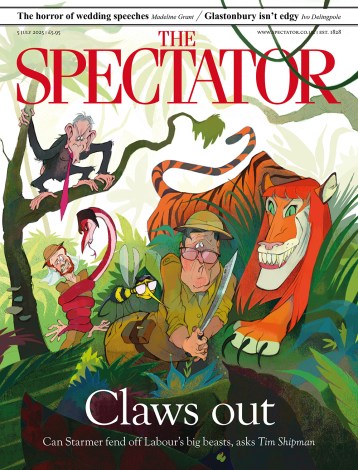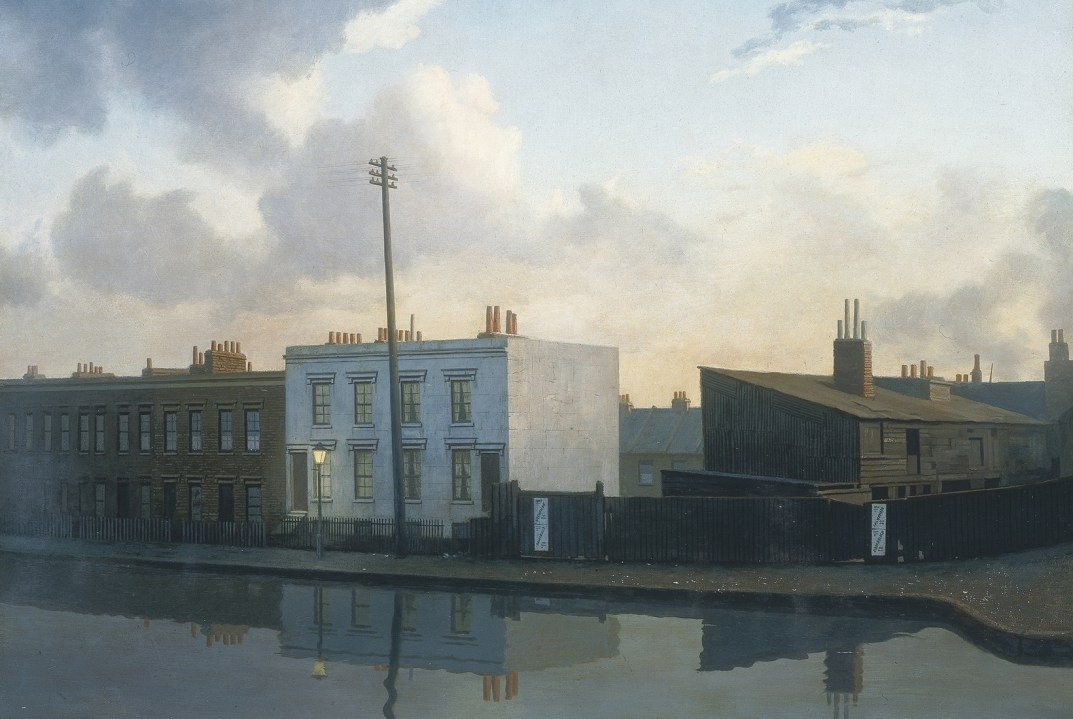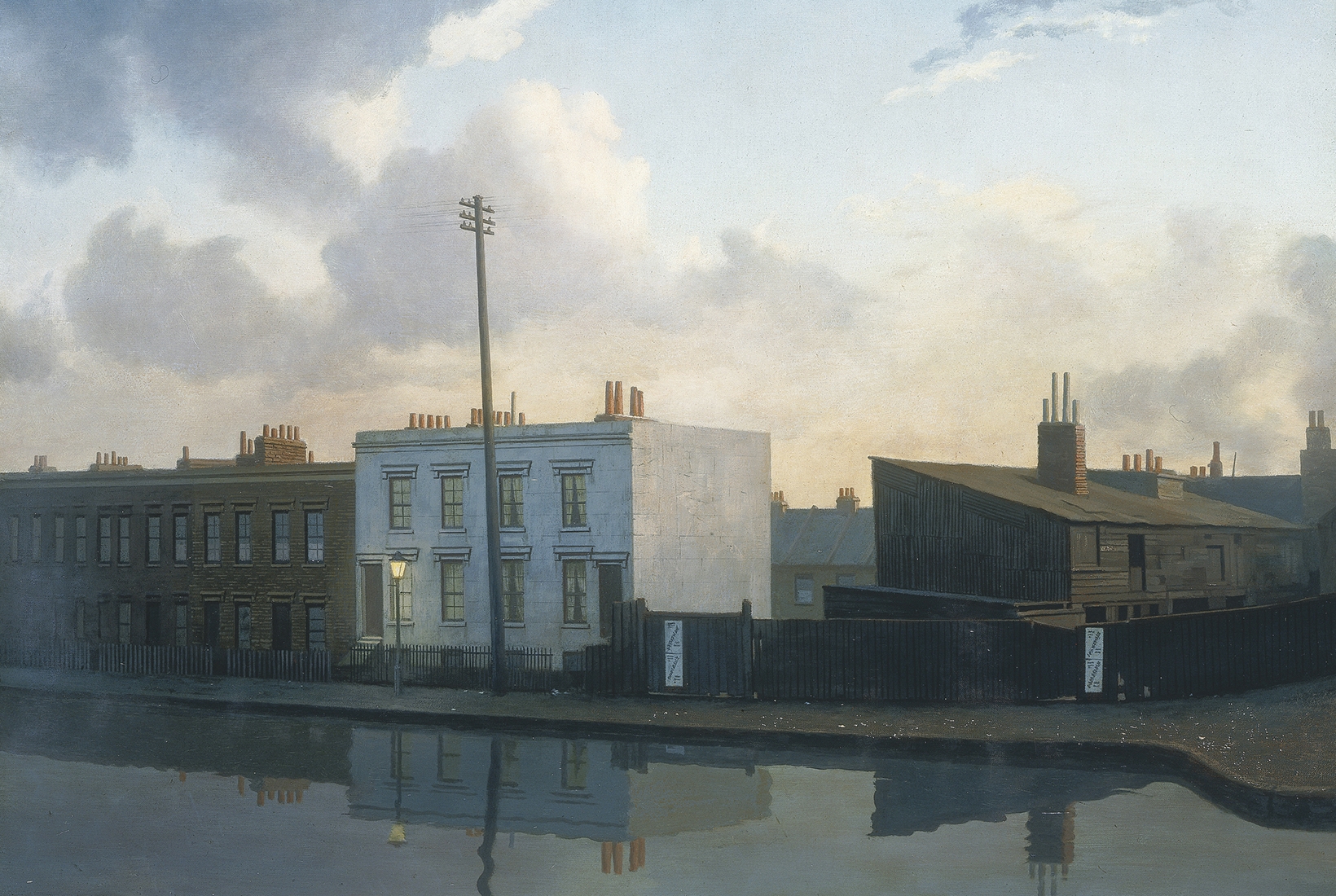Quite late in life Walter Sickert paid his first visit to Peckham Rye. He was excited, apparently, because he had often heard about it but never actually been there. Evidently Sickert had a sense of London as an unknown city, full of potential. And he was far from being the only artist fascinated by the hidden recesses of this vast urban labyrinth. Algernon Newton, another case in point, was equally fascinated by unfashionable byways of the metropolis.
For Sickert it was music halls and dingy bedrooms in Camden that seemed full of visual possibilities; for Newton it was terraced streets and urban water courses, their banks empty of people. Not for nothing was he dubbed ‘the Regent Canaletto’. A series of his paintings from the 1920s, ’30s and ’40s follows the course of the Regent’s Canal as it passes through Maida Vale and Paddington.
Superficially at least, Newton (1880–1968) seems a prime example of an artist out of step with his time. Although an almost exact contemporary of Picasso, he appeared oblivious to modernism. Edward Hopper, another close contemporary whose work Newton’s somewhat resembles, managed to study in cubist Paris without noticing the ferment that was going on around him. Newton could doubtless have done the same.
For Newton the terraced streets and urban water courses of the metropolis were full of fascination
On the other hand, he must have been just about the only artist of the 20th century to have been strongly influenced by 18th-century Venetian view-painting. After the first world war, when surrealism was stirring in Paris, Newton spent hours in the National Gallery studying Canaletto’s works.
Nonetheless, there is such a thing as a zeitgeist, and it is hard to escape. Although neither Hopper nor Newton could be described as surrealists, there is a dreamlike quality to the work of both. This is what lifts a masterpiece such as Newton’s 1935 ‘The Surrey Canal, Camberwell’, in the Tate Collection, and makes it live in the memory.
The sense of strangeness is something to do with the absence of people — a eeriness Newton’s works share with the cityscapes of De Chirico, who was, come to think of it, another contemporary. And it is also to do with the light. The time in the painting is evidently just on the edge of night. The sky is bright, full of soft clouds, but the houses on this nondescript corner of south London are in shadow. Although it is not dark, one street lamp is glowing, which somehow makes the picture.
It was, Newton recalled, the ‘rendering of light in landscape’ that drew him to Canaletto. He had never encountered ‘such accurate and sensitive values in any other master’. This was at a turning point in his life and his career just after the first world war, a time of returning wounded, economic depression and — as we can’t help remembering now — the Spanish flu pandemic.
Newton was, in a way, born into the art world. His grandfather had been one of the founders of Winsor & Newton. But Algernon was a long time in finding his way. He was unhappy at school, left Cambridge after two years, then studied art in slightly eccentric places such as a school of animal painting on Baker Street. He joined up when war broke, but was invalided out with pneumonia and retreated to the artists’ colony at Lamorna in Cornwall, before returning to London in 1919.
At this point, he was reduced to selling his pictures in the street. At the time many ex-soldiers were begging. They wore masks, presumably to protect them from the shame of being recognised. Newton did the same. Perhaps that desolate hanging around on pavements was useful, though, because from 1923 he began to paint those marvellous urban views.
‘There is beauty to be found in everything,’ Newton later wrote. ‘You only have to search for it; a gasometer can make as beautiful a picture as a palace on the Grand Canal, Venice. It simply depends on the artist’s vision.’ Indeed it was precisely when he depicted somewhere unheralded, the opposite of what Sickert used to call ‘the august view’, that Newton became a remarkable painter. His topographical portraits of country houses, for example, are much less arresting.
From the 1920s his life followed a more conventional path. He became a respected and successful Royal Academician; after his death, the RA held a memorial exhibition. Nonetheless his reputation still remains in the pending zone: not yet installed in the pantheon of notable British painters but definitely a candidate for admission. His best pictures have a distinctive, if indefinable, quality.
Especially now, in this odd era of daily walks in semi-deserted towns, he often comes to mind. The other day, I walked down a long street of early 19th-century houses, a sharp church spire sticking up in the centre. The winter sunshine was bright and there wasn’t a person or car in sight. I thought of Algernon Newton.







Comments